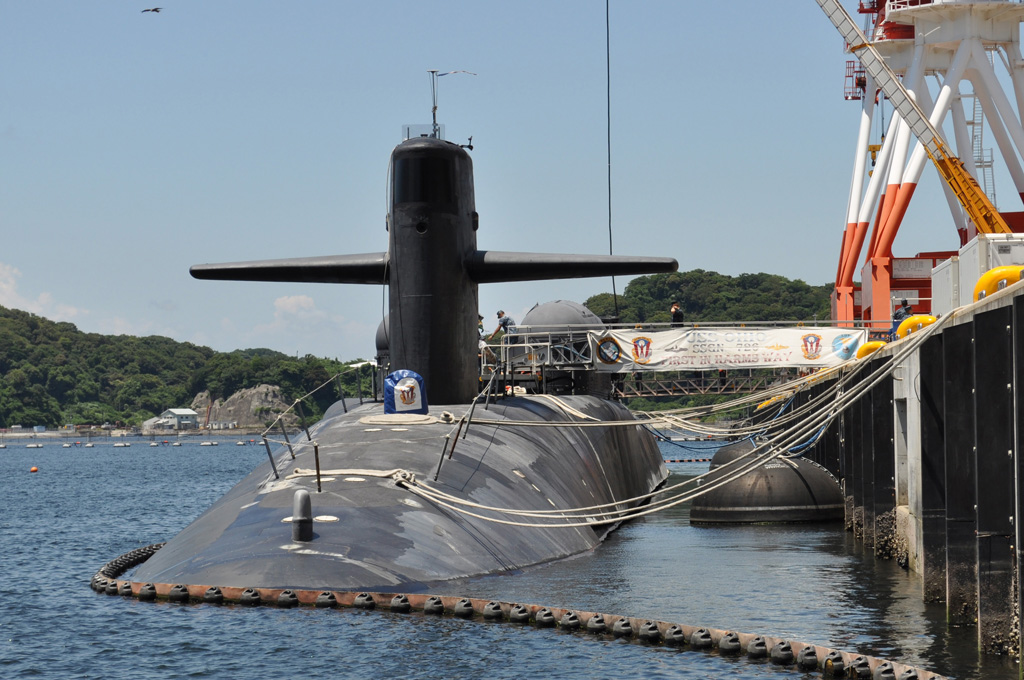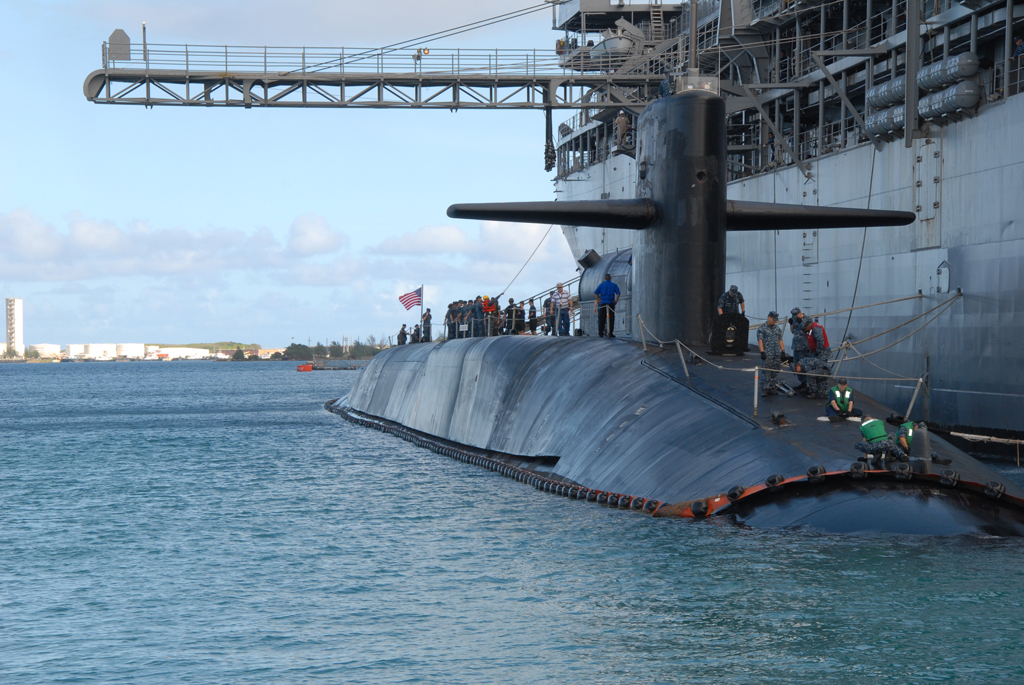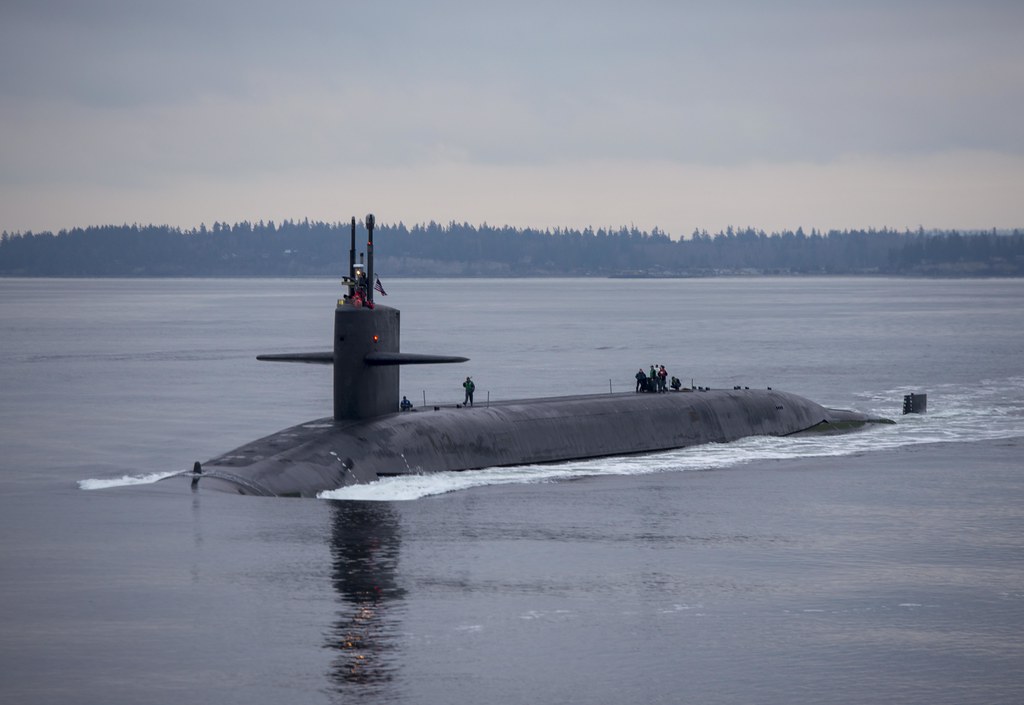
The Ohio-class submarine fleet, a cornerstone of American naval prowess since the Cold War, stands as a testament to the United States’ strategic deterrence capabilities.

These submarines, initially introduced to the world in the 1980s as a silent and nearly undetectable force, were designed to maintain a retaliatory nuclear strike capability.

However, the fall of the Soviet Union saw a shift in their use, with four of these leviathans adapted to become guided missile submarines (SSGNs).

Their conversion offered tactical versatility and advanced communication systems, making them an underwater joint command center capable of carrying 154 Tomahawk missiles and supporting special operations forces.

As tensions rose in the Middle East, the United States sent a clear message of deterrence by announcing the deployment of an Ohio-class submarine to the region amidst the Israel-Hamas war.

The U.S. Central Command highlighted this rare move on social media, emphasizing the sub’s arrival in the Suez Canal. This was a strategic show of force against adversaries, including Iran and its proxies, joining other U.S. Navy assets in the area.

The Ohio-class SSGNs, with their massive Tomahawk arsenal, have previously demonstrated their formidable strike capability during Operation Odyssey Dawn in Libya in 2011, where the USS Florida unleashed almost 100 Tomahawks against Libyan targets, marking their combat debut.

Despite this operational success and undeniable strategic value, the Navy faces a concerning gap. With the planned retirement of the first two SSGNs in 2026 and the final two in 2028, there is no immediate replacement on the horizon that can match their firepower and flexibility.

The new Virginia-class Block V submarines, though equipped with vertical launch tubes, fall short in numbers and capability.

It will take until the 2040s before the Navy can field enough Virginia-class vessels to compensate for the retiring SSGNs. This poses a significant challenge as the world grows increasingly perilous, and the unique capabilities of the Ohio-class SSGNs remain as crucial as ever.

Although the service life of these vessels is nearing its end, having served for four decades, their retirement comes at a time when vertical launch payload capacity is crucial.

The U.S. Navy requires a fleet of Virginia-class submarines equipped with Virginia Payload Modules to regain the lost firepower. However, delays due to the pandemic and industrial challenges have pushed back schedules, leading to an immediate decline in payload capacity.

Furthermore, prioritization of the new Columbia-class SSBNs, which are vital to maintaining the nuclear triad, exacerbates the issue by taking precedence over the attack subs in production timelines.

The deployment of Ohio-class submarines to strategically sensitive regions exemplifies their importance in the current geopolitical climate. As the Navy contemplates their retirement, the gap left in their wake is not merely one of firepower but also of strategic influence.

The military must carefully navigate this transition to ensure that U.S. naval strength remains undiminished in the face of global threats.
Relevant articles:
– The Navy’s Great Ohio-Class Submarine Mistake Has Now Arrived, The National Interest
– US says Ohio-class submarine has arrived in Middle East, a message of deterrence amid Israel-Hamas war, cnn.com
– The Navy’s Ohio-Class Submarine Nightmare Is Just Getting Started, The National Interest
– US Ohio-Class Nuclear Submarine Deployed to Middle East Amid Tensions, Newsweek

